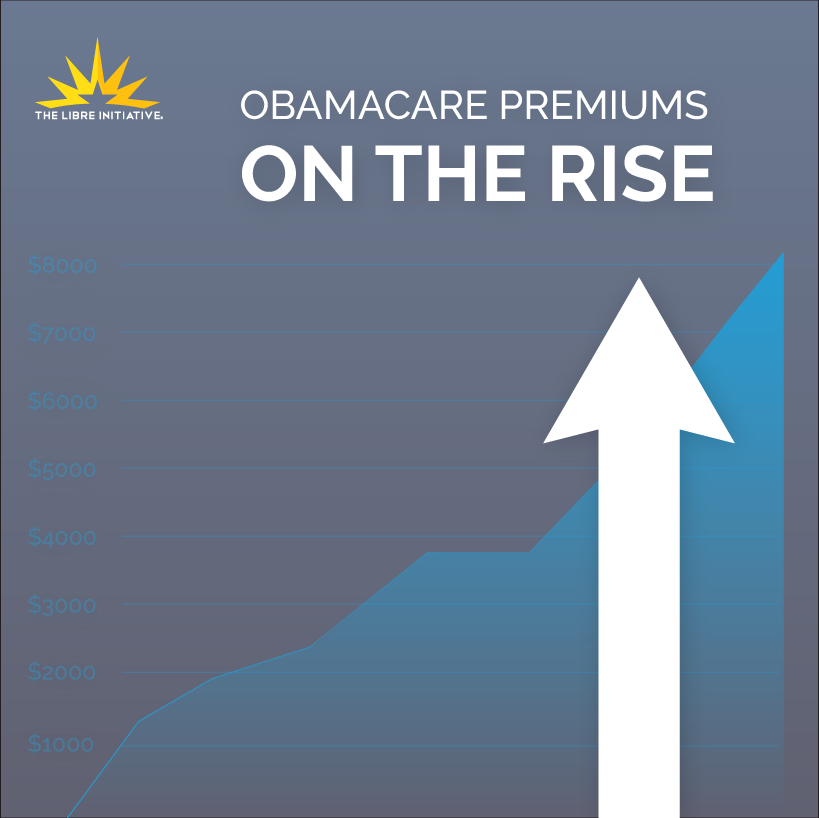Rising Health Insurance Rates Continue to Pose Challenges for Latino Families

Hispanics know that despite a lot of activity in Washington in recent years, it’s still hard to afford quality health care and health insurance. More than twice as many Hispanics are without health insurance as compared to white Americans, and more than one-quarter of Hispanics went without a health care visit in the last year, according to the Kaiser Family Foundation. Twenty-two percent of Hispanics went without care due to cost in the last year. That’s a sad situation. Simply put, health care remains an important challenge – despite implementation of the Affordable Care Act (or Obamacare), and despite massive federal spending on health insurance programs.
According to a recent press report, as health insurance premiums continue to increase, even many well-off American families are choosing not to purchase insurance. In some cases, families cannot find competitively-priced insurance that covers needed care for those with serious health challenges, so they forego insurance and pay those costs out of pocket:
In tiny Marion, North Carolina, the Buchanans decided that $1,800 a month was too much to pay for health insurance, and are going without it for the first time in their lives.
In Harahan, one bend of the Mississippi River up from New Orleans, the Owenses looked at their doubling insurance premiums and decided no, as well. “We’re not poor people but we can’t afford health insurance,” Mimi Owens said.
And in a Phoenix suburb, the Bobbies and their son Joey will go uninsured so the family can save money to cover their nine-year-old daughter Sophia, who was born with five heart defects.
The problem isn’t so much that these families lack jobs and income; it’s that the cost of insurance has grown so dramatically that families simply can’t justify spending so much on policies with such severe limitations:
But [the Buchanans’] insurance premium was $1,691 a month last year, triple their mortgage payment—and was going up to $1,813 this year. They also had a $5,000 per-person deductible, meaning that having and using their coverage could cost more than $30,000.
Premiums have been rising under Obamacare for years, and government reinsurance bailouts appear to have had little effect to slow down this increase.
From 2014 until it expired at the end of 2016, ObamaCare’s reinsurance program gave participating insurers extra taxpayer subsidies to cover the claims of high-cost patients whom its preexisting-conditions provisions require them to cover at a loss. The extra subsidies were supposed to reduce premiums, and prevent a race to the bottom fueled by ObamaCare’s penalties on quality coverage.
If ObamaCare’s reinsurance program was supposed to keep premiums from skyrocketing, it was an utter failure. Premiums increased 18-25 percent per year from 2013 through 2016, well above the trend of 3-4 percent from 2008 to 2013. By 2017, premiums had doubled—a cumulative increase of 99 percent or 105 percent, depending on the source—from pre-ObamaCare levels. ObamaCare’s preexisting-conditions provisions were the driving force behind these premium increases.
It is expected that dramatic premium increases will continue unabated again this year.
It’s hard to escape the conclusion that the Obamacare approach to health care reform simply hasn’t worked. The stated goal was to deliver better health insurance for the vast majority of Americans by mandating better insurance policies, and spending more taxpayer money to help people purchase it. But while policies have gotten more expensive, most Americans aren’t finding those policies to be better. And many can’t afford them even when they are. Real health reform is needed.
There is good news however – in the form of a proposal from the White House to allow people to purchase short term plans that have narrower coverage provision, but which meet their needs at a lower cost:
At the end of 2016, the average monthly cost for a short-term plan was only $124. By comparison, an unsubsidized Obamacare-compliant plan that year cost an average of $393 per month
Obamacare’s proponents refer to short-term plans as “junk insurance” because they only cover the bare necessities, like doctor visits and emergency care. They may not cover all ten of Obamacare’s “essential health benefits,” such as prescription medicines or substance abuse treatment.
Prior to October 2016, many healthy Americans who felt they needed just minimal coverage opted for cheap, 364-day short-term plans. Between 2013 and 2015, sales of short-term plans grew by more than 150 percent. They offered a valuable escape hatch from Obamacare’s costly exchanges for those who did not have employer-based coverage…
The Trump administration’s proposed rule would put low-cost coverage options back on the table. Health and Human Service Secretary Alex Azar said the plans, if approved, could become available later this summer or early this fall. “[F]or Americans who have been priced out of Obamacare plans, who can’t find a plan that will cover their doctor, or who are looking for affordable coverage between jobs, these short-term plans could make a lot of sense,” he wrote in an op-ed for CNN.com.
This reform has the potential to deliver better insurance options for many families – including low and middle-income Latinos, who have been left behind by ineffective reforms in Washington. Ultimately, Congress and the president must come together on a plan to put consumers – in consultation with their doctors – back in charge of important health care decisions.

